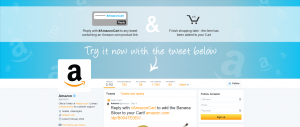 New research from Deutsche Bank Securities Inc. reveals interesting insights into Twitter users’ behaviors and perceptions that brands need to understand. The study found that nearly half of active Twitter users are very engaged and use the platform more than once per day. In fact, daily average use of Twitter isn’t far behind Facebook’s daily average use.
New research from Deutsche Bank Securities Inc. reveals interesting insights into Twitter users’ behaviors and perceptions that brands need to understand. The study found that nearly half of active Twitter users are very engaged and use the platform more than once per day. In fact, daily average use of Twitter isn’t far behind Facebook’s daily average use.
More than one out of two Twitter users (51%) want to learn about news and related events when they visit the platform. Furthermore, more than one out of three Twitter users (37%) use the social media platform to find interesting content and articles. In other words, Twitter isn’t just a communications and broadcasting tool. It’s very much a content discovery tool, which is very important for brands to understand and consider during the development of content marketing and social media marketing strategies.
Two areas of the study results are most important to brands: mobile and advertising. Let’s look at the results in both areas in more detail.
Mobile Twitter Usage and What It Means for Brands
More than three out of four Twitter users (76%) use the platform via mobile devices. Nearly 72% of active Twitter users access the site using mobile apps while more than 13% use Twitter mobile websites. Only 58% access the site via desktop or laptop.
The Takeaway: For brands, this means you need to create content and promotions that are mobile-friendly. Make sure links in tweets and ads lead to landing pages are mobile-optimized.
Twitter Advertising and What Brands Need to Know
Nearly two out of three Twitter users (60%) responded to the Deutsche Bank Securities Inc. survey stating that they have seen an ad on Twitter, but 40% stated that they have never seen ad ad on Twitter. That means one of two things—either ads are so unobtrusive that Twitter users simply don’t realize that they’re ads or Twitter users really aren’t seeing those ads.
The study also found that of those Twitter users who have seen ads, 83% of them do not believe that the ads they’ve seen on Twitter are relevant or useful to them.
The Takeaway: For brands, these findings mean that Twitter advertising investments are unlikely to drive the return on investment they need. Fortunately, Twitter has introduced more audience targeting features to its advertising options. It is imperative that brands use those targeting tools to increase the relevancy and usefulness of Twitter ads so the audience notices them and takes action.
You can follow the link at the beginning of this article to read the full report from Deutsche Bank Market Research.
Image: Garrett Heath
Susan Gunelius is the author of 10 marketing, social media, branding, copywriting, and technology books, and she is President & CEO of KeySplash Creative, Inc., a marketing communications company. She also owns Women on Business, an award-wining blog for business women. She is a featured columnist for Entrepreneur.com and Forbes.com, and her marketing-related articles have appeared on websites such as MSNBC.com, BusinessWeek.com, TodayShow.com, and more.
She has over 20 years of experience in the marketing field having spent the first decade of her career directing marketing programs for some of the largest companies in the world, including divisions of AT&T and HSBC. Today, her clients include large and small companies around the world and household brands like Citigroup, Cox Communications, Intuit, and more. Susan is frequently interviewed about marketing and branding by television, radio, print, and online media organizations, and she speaks about these topics at events around the world. You can connect with her on Twitter, Facebook, LinkedIn, or Google+.


